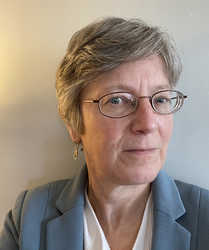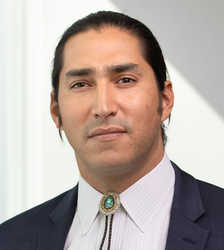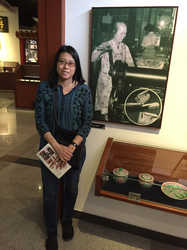(Page 8 of 9) Print Version
We mutually pledge to each other our Lives, our Fortunes and our sacred Honor
Dehumanization and violence
How do you identify yourself? Probably by a myriad of roles based in your family, race, language, religion, gender, sexual orientation, and the expectations that society puts upon you.
Some roles are easily accepted, cemented into the infrastructure of the United States—first through the Doctrines of Christian Discovery and Domination and later to the U.S. government's preference toward wealthy, straight, White men. Some identities, emboldened by society—religion, kin groups or clans, class, governments, and laws—use varying levels of force to control people. Over the past 500 years in what is now known as Maine, stereotypes and laws have created a system of lasting discrimination and intolerance, often seen as harmless until it explodes into mob violence.
Wabanaki people have been dehumanized as "savages," victims of state-sanctioned genocide, their children have been stolen and adopted into White homes to force assimilation, and there is a continuing epidemic of violence against Indigenous women.
Catholics and other non-Protestant faiths along with immigrants and Black people have faced slurs, been expelled from towns, and were tarred and feathered to enforce compliance—often at the hands of hate groups like the "Know Nothings," the predecessors of the Ku Klux Klan.
Patriarchal laws, discrimination, and sexism have impeded the ability of women, gender non-conforming, and LGBTQ2+ people to fully participate in society; those who stepped out of line often saw brutal consequences.
Corsets, Rosie the Riveter, and Leave it to Beaver
For centuries, women have worn corsets, or laced bodices, to embody society's perceptions of beauty relating to the female figure. Corsets fulfill a desire for a tiny waist and full bust. Over time, the tight lacing can cause physical deformities, and women from the 15th to 19th centuries damaged their health from the constriction. Corsets were tied tightly with as many as fifty laces, supposably to impose modesty upon the wearer—even children.
Corsets began as a marker of class and society. Later they were seen as a form of female oppression and victimization. Today they are sometimes used as a symbol of empowerment and feminine rebellion a-la the pop star Madonna in the 1980s.
During World War II, with men fighting on the frontlines of the war, factories, military units, and other male-dominated industries were desperate for labor. Advertising propaganda— think Rosie the Riveter—encouraged women to leave their homes and join the World War II effort.
After the war, the same propaganda machines worked to force women back into domestic roles. "Leave it to Beaver" stereotypes of the nuclear family enforced gender roles which bolstered consumerism and traditionalism among the American public after World War II.
Margaret Chase Smith goes to Washington
Women's path to politics often led through their husbands. The convention of the "widow's mandate" became popular after women won the vote in 1920, and involved appointing or advancing by special election a woman to fill out the congressional term of a husband or other male relative.
When Margaret Chase Smith's husband died in 1940, she replaced him in the U.S. House of Representatives and went on to serve eight years in the House before being elected to the U.S. Senate—the first woman elected to the Senate in her own right and the first woman to serve in both houses of Congress.

Margaret Chase Smith Presidential Campaign Hat, 1964
Item Contributed by
Margaret Chase Smith Library
Smith was a Republican but she had a strong independent streak. She is perhaps best known for her Declaration of Conscience speech in 1950, in which she denounced the tactics used by her colleague Joseph McCarthy in his anti-communist crusade. "I don't like the way the Senate has been made a rendezvous for vilification, for selfish political gain at the sacrifice of individual reputations and national unity," she said. Smith herself had been smeared as a Communist during her earlier campaigns, which may have led to her opposition to McCarthy.
Often the only woman in the Senate, Smith chose not to limit herself to "women's issues," making her mark in foreign policy and military affairs. She established a reputation as a tough legislator on the Senate Armed Services Committee. She also co-sponsored the Equal Rights Amendment and supported civil rights, Medicare, and increased funding for education. She ran for president in 1964.
Smith was known for her signature hats and pearls. While Smith noted the discrimination she faced as a woman, her campaign song, Leave it to the Girls by Gladys Shelley, embraced gender stereotypes:
But leave it to the girls
They're heaven sent
It could be that our next president
Will wear perfume and pearls
Be diplomatic in pin curls
For love and glory leave it to the girls!
Women's Resistance
On January 21, 2017, people walked peacefully in solidarity with the Women's March in Washington DC in support of human rights, women's rights, and justice. An estimated 10,000 people in Augusta and 15,000 in Portland marched. Maine Historical Society collected signs, buttons and objects from the events.
Ellen Crocker of Bethel was 78 when she attended the Women's March in Augusta. She said, "I was at a loss as to what an old lady could do. I went on Etsy and found someone who would make me a batch of my design." Her Purr-Sist buttons are a tip to Elizabeth Warren, pussy hats, and sisterhood.
The equal freedom to marry
Why did it take a ruling from the U.S. Supreme Court for same-sex couples to be able to marry nationwide? After all, deciding whether and whom to marry is an intensely personal decision and is associated with a life partnership of love, commitment, mutual responsibility and care. Our society allows individuals, not the government, to make that choice for themselves.
The short answer is that states control marriage laws and many states did not expressly allow, and later explicitly barred, same-sex couples from marrying. Those laws collided with the human aspirations of LGBTQ+ people who, like generations of people before them, simply wanted to join in marriage with the person they loved in the unique cultural, legal, and social institution of marriage. Those state bans also collided with constitutional guarantees of equal protection and due process of law, and denied fellow Americans that legal commitment and protection, as well as their common humanity.
In the 1970s, same-sex couples courageously stepped up to end their exclusion from marriage. They were inspired by the Supreme Court's 1967 ruling in Loving v. Virginia that ended the remaining (but once common) racially-based marriage restrictions, holding that they violated both equal protection guarantees and the liberty-based "freedom to marry." Wins came decades later with steps forward in Hawaii in the 1990s to the landmark Massachusetts case in 2003. These developments and others drove public understanding and engagement nationwide about LGBTQ+ people and set the stage for the U.S. Supreme Court challenge. As one federal appellate court put it in 2014, "it is not the Constitution that has changed, but the knowledge of what it means to be gay or lesbian."
United States Supreme Court Justice Ruth Bader Ginsburg famously described the history of our constitution as the story of the extension of constitutional protections to people once ignored or excluded. We are living participants and witnesses to that enduring journey, including for LGBTQ+ people.
—Mary L. Bonauto
Civil Rights Project Director, GLBTQ Legal Advocates & Defenders (GLAD), Portland and Boston
Marriage Equality, Maine, and the U.S. Supreme Court
Maine advocates seeking to allow same-sex couples to join in marriage never took their eyes off of the legislative process—to speak to their lawmakers and ask them to end their exclusion from marriage laws and to protect their families.
Governor John Baldacci signed a marriage law in Maine that had enjoyed bipartisan support, but voters narrowly approved a "people's veto" to repeal the marriage law at referendum in November 2009. For the next three years, Mainers from all walks of life talked to their families, neighbors, and faith communities about why marriage matters. In 2012, Maine voters approved a ballot measure allowing same-sex couples to marry, showing the entire nation that people can change their minds and embrace the families and children of LGBTQ+ people.
In January 2015, the U.S. Supreme Court granted review of a federal appellate court ruling against the couples and surviving spouses seeking marriage and respect for their existing marriages in cases arising from Michigan, Ohio, Tennessee and Kentucky. With a team of Michigan attorneys, I represented April DeBoer and Jayne Rowse and Kentucky couples seeking the freedom to marry at the U.S. Supreme Court. Other teams represented Jim Obergefell and couples from Ohio, Tennessee and Kentucky who sought in-state recognition of their existing marriages joined elsewhere. In my first words to the Court that morning of April 28, 2015, I tried to distill the experiences of countless families, children and surviving partners I'd met over the years into the language of law:
Mr. Chief Justice and may it please the Court. The intimate and committed relationships of same-sex couples, just like those of heterosexual couples, provide mutual support and are the foundation of family life in our society. If this legal commitment, responsibility and protection is off-limits to gay people as a class, the stain of unworthiness that follows on individuals and families contravenes the basic constitutional commitment to equal dignity. Indeed, the abiding purpose of the Fourteenth Amendment is to preclude relegating classes of persons to second-tier status.
The Supreme Court's majority ruling relied on the same legal frameworks as in Loving (1967) and explained at length both why marriage is a "fundamental right" and why marriage bans violate "central precepts of equality." A large majority of Americans support marriage equality as law. And most importantly, any two people otherwise qualified to marry can now do so regardless of gender. It is the law of the land.
—Mary L. Bonauto
Civil Rights Project Director, GLBTQ Legal Advocates & Defenders (GLAD), Portland and Boston
Anti-immigrant violence
Prejudice and discrimination in Maine against immigrants dates back to at least the mid-1700s, when Pope's or Pope Day (Guy Fawkes Day in Britain) was celebrated in Portland. Effigies of the Pope and the Devil were carried around town to loud cheers and slurs. Protestants had been taught since birth to hate Roman Catholicism. After all, French Catholics had been their enemy since the 1690s during the Colonial Wars.
When large numbers of Irish Catholics started to immigrate to the U.S. beginning in the 1820s, Protestant anti-Catholic, anti-immigrant, and anti-Irish groups were formed all over, including Maine. The large influx of Irish people who came during and after the Great Hunger (the Great Irish Potato Famine, 1845-51) only accelerated the formation of these groups, culminating with the Know Nothings, a secret anti-Irish, anti-Catholic party that gained political power throughout the United States in 1854-55. Their poster child in Portland was Mayor Neal Dow.
In Maine, the Know Nothings burned down three Catholic churches—in Bath, Lewiston, and Ellsworth. In 1854, they tarred and feathered Father John Bapst, a Swiss Jesuit, in Ellsworth. The issue of slavery, as well as their excesses, finally doomed the Know Nothings and they disappeared.
But the hate and suspicion of foreigners resurfaced again in the 1870s and in the 1890s, when the American Protective Association was in their heyday. This group was, of course, followed by the Ku Klux Klan in the 1920s.
—Matthew Jude Barker, Historian, Genealogist, Maine Irish Heritage Center

First phase, burning of the Old South Church, Bath, 1854
Item Contributed by
Maine Historical Society
John Bapst tarred and feathered in 1854
Father John Bapst (1815-1887) was a Jesuit missionary who came to Maine in 1853. His first mission was with the Penobscot Nation. Later he moved to Eastport with the Passamaquoddy Tribes.
Bapst was tarred and feathered by members of the political party, the Know Nothings in Ellsworth on October 14, 1854 because he insisted that the Catholic students be allowed to read the Catholic Bible in public school, rather than the Protestant Bible, which was part of the curriculum at that time.
The religious persecution and violence Bapst experienced at the hands of the Know Nothings was shocking and unacceptable. However, the story is more complicated. Bapst's support of the Catholics was based in the primacy of religious freedom, yet at the same time he was actively converting Wabanaki people to Catholicism.
Epidemic of violence against Indigenous people
Some say that systemic racism does not exist in Maine. My family's story illustrates that such statements are demonstrably false. Maine's criminal justice system has facilitated the epidemic of violence against Indigenous people. Maine's apathetic if not malicious attitude toward criminal justice in Wabanaki communities is one of the reasons that Indigenous women in Maine are more likely to be the victim of sexual assault in their lifetime than their White peers.
On November 14, 1965, five White hunters from out-of-state killed Peter Francis, my great-grandfather, who was a Passamaquoddy elder and a disabled World War II Veteran. The names of the hunters are James Ellinwood, Romolo Capobianco, Daniel Frobese, William Robbins, and Hugh O'Neil. The men came to my community, "Sipayik," looking for girls. According to witnesses, they offered money and alcohol in exchange for access to young school-age women. Peter, his brother George, and his brother-in-law Christy, sought to distract the men and to protect the young women from the aggressive overtures of the hunters. However, the hunters' thirst for sexual deviancy soon turned violent.
Within hours of their arrival at Sipayik, the hunters had mortally wounded Peter, and had severely beaten Christy and his eight-year-old son, Kirk. As they sped off, Peter lay in a pool of his own blood, having suffered a fatal blow from a two-by-four that one of the hunters had picked up from a nearby scrap pile. Peter died the next day, and Christy and Kirk were left with psychological scars that never fully healed.
My great-grandfather survived the torpedoing of his ship during World War II and being stranded alone in Maine's backwoods one winter, only to die while visiting his home at Sipayik. He stood no chance against five young men whose sense of entitlement toward Indigenous women turned murderous. The sick ideations of these men are no surprise given the fascination of American and European societies with hypersexualized portrayals of Indigenous women.
American culture is rife with reliance on the age-old racist stereotypes of Native American men as "noble savages" and of Native American women as "squaws" in need of rescuing like Captain John Smith "saved" "Pocahontas." These images and their underlying racist tropes have become ingrained in America's collective memory and lives in the subconscious of every person who has seen or read a fictional account of the "holiday" now known as "Thanksgiving" or seen Disney's misogynistic account of Pocahontas. These fictionalized accounts of real events gloss over the acts of violence and oppression that occurred in real time. The murder of Peter Francis was just another symptom of this societal problem, which still stands as an obstacle to racial equity in this country.
—Michael-Corey F. Hinton (Passamaquoddy)
Americanization for Immigrants
From 1922 to 1945, the Portland Public Schools offered daytime "Americanization" classes for adult and school-aged immigrants. Although organizations in Portland had provided coursework in the English language and citizenship before, this effort, led by veteran teacher Clara L. Soule, was the most visible and vigorous.
Americanization was a national movement that gained traction during World War I, when some Americans questioned the loyalty of immigrants to their adopted land.
The 1924 National Origins Act, which restricted European immigration and prohibited Asian immigration, was the result of several decades of debate over the place of race and ethnicity in American citizenship. On a local level, changes in Portland city government and the rise of the Ku Klux Klan were motivated by anti-immigrant sentiments.
In response to the charge that immigrants could never become American, leaders like Clara Soule used public education to demonstrate that American democracy was, indeed, inclusive.
—Rachel Miller
From Chinese Laundress to Mother of the Year
Toy Len Goon (阮陳彩蓮), a Chinese immigrant from Taishan County (台山縣), Guangdong Province (廣東省) was selected as U.S. Mother of the Year in 1952, in recognition of raising eight successful children while running a hand laundry after her husband, Dogan (阮祖根), a WWI veteran died. Dogan had entered the U.S. in 1912, skirting the Chinese Exclusion Laws (1882-1943), and became a citizen in 1921. Dogan married Toy Len in China, and they settled in Portland in 1921. Toy Len quickly adapted to the daily tasks of laundry, housework, and raising her children.
Clara Soule, a retired school teacher who had engaged in "Americanization" work through Portland Public Schools in the 1920s nominated Toy Len Goon for the Mother of the Year honor. In the context of the Cold War, the U.S. wanted to be seen as the democratic leader of the free world. As the head of an upwardly mobile immigrant family, Toy Len Goon was a strategic choice. The U.S. deployed her image as part of a cultural cold war as the country tried to extend its influence in Asia. The Goon family was portrayed as exemplary model minorities, facilitated by their in-between racial positioning, neither Black nor White.
The media coverage and public image created around her story contained inaccuracies and did not portray the roles Toy Len Goon took on—not only a housewife and mother—but also a businesswoman, wife, daughter, sister, and Goon clan member. Though she was characterized as an assimilated American representing motherhood and domesticity, the media deemphasized the numerous ties Toy Len maintained to the Chinese American community and to her family in China.

Toy Len Goon, American Mother of the Year, New York, 1952
Item Contributed by
Maine Historical Society
While Toy Len Goon and her children never recalled feeling race-based discrimination, their experiences, as well as those of Asian Americans more broadly, were shaped by exclusionary immigration policies, and a history of social and economic marginalization and violence that created conditions in the United States that they had to work so hard to overcome.
—Dr. Andrea Louie
Professor of Anthropology, Michigan State University and Toy Len Goon's granddaughter
Friendly URL: https://www.mainememory.net/exhibits/beginagain


















